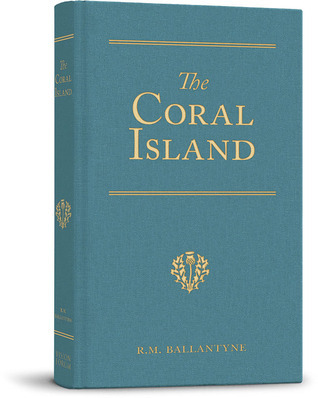The Coral Island Book Summary
TL;DR
The Coral Island follows three boys shipwrecked on a tropical paradise that turns perilous with the arrival of cannibals and pirates, exploring themes of civilization versus savagery.
What is The Coral Island about
The Coral Island, written by R.M. Ballantyne, presents an adventurous tale centered around three teenage boys—Ralph, Peterkin, and Jack—who find themselves stranded on a deserted coral island after a shipwreck. Initially, the island appears to be a paradise filled with resources, beauty, and freedom. However, the boys soon encounter threats in the form of cannibals and pirates, forcing them to confront the darker aspects of human nature and survival. The narrative operates within the context of 19th-century views on imperialism and the civilizing influence of Christianity, casting the boys as agents of order amidst chaos. Ballantyne's work, while an adventure story, serves as a reflective commentary on societal structures and moral dilemmas.
The Coral Island 5 Key Takeaways
Shipwreck on the Coral Island
Ralph, Peterkin, and Jack survive a shipwreck and find themselves on a beautiful coral island, initially enjoying their newfound freedom and abundance of resources.
Encounter with Cannibals
The boys soon discover that the island is not without danger, as they confront cannibal tribes that pose a threat to their safety and morality.
Pirate Attack
A pirate ship arrives, escalating the tension and forcing the boys to band together to defend their territory and rescue any victims of the pirates.
Unity and Leadership
Through their trials, the boys learn the importance of unity and leadership, relying on one another to navigate the challenges they face.
Final Confrontation
The story culminates in a dramatic confrontation with the cannibals and pirates, highlighting themes of bravery and the struggle between civilization and savagery.
Top The Coral Island Quotes
- "In the midst of danger, we found not only our courage but also the essence of our humanity."
- "Adventure is the essence of youth, but it is the trials that define us."
Who should read The Coral Island?
The Coral Island is ideal for young readers and anyone who enjoys adventure novels and historical fiction. It offers valuable insights into leadership, morality, and the complexities of civilization, making it both entertaining and thought-provoking.
The Coral Island Best Reviews
- "A thrilling adventure that captures the spirit of youth and the trials of survival in an untamed world." - A literary critic
- "Ballantyne's narrative is a rich tapestry woven with moral lessons and insights into human nature." - A historical fiction reviewer
People also liked these summaries
The Coral Island FAQs
What is the main message of The Coral Island?
The Coral Island conveys themes of civilization versus savagery, the civilizing influence of Christianity, and the importance of leadership in overcoming adversity.
Is The Coral Island suitable for children?
Yes, The Coral Island is a suitable read for children and young adults, offering adventure and moral lessons in a captivating narrative.
What influenced R.M. Ballantyne's writing?
Ballantyne's writing was influenced by the imperialistic views of his time, adventure literature, and his own experiences in travel and exploration.
